Track Your Packages
Remix programming stacks to use an X-Y tracking device to follow a path on a piece of paper.
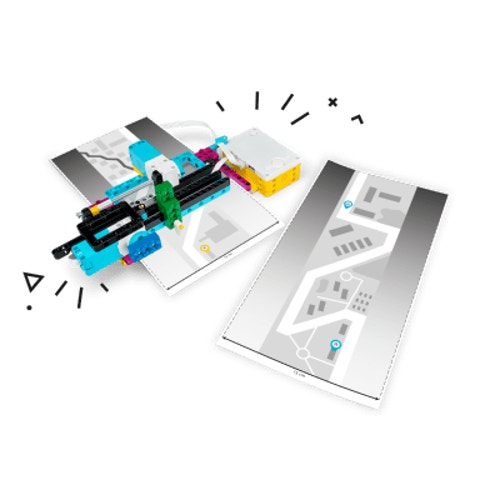
Lesson Plan
1. Prepare
- Read through the student material in the LEGO® Education SPIKE™ App.
2. Engage (5 Min.)
- Use the ideas in the Ignite a Discussion section below to engage your students in a discussion related to this lesson.
- Use the video to explain the lesson.
3. Explore (20 Min.)
- Have your students work in pairs to build the tracking system.
- Demonstrate and explain how to load the paper.
- Ask them to play the programming stacks to make sure everything works.
4. Explain (5 Min.)
- Ask your students to combine the programming stacks into a single program that follows the path on the paper. Highlight that they can reuse the existing programming blocks.
5. Elaborate (15 Min.)
- Give your students time to work through a second program, making sure they're reusing their code but adjusting parameters along the way.
- Don't forget to leave some time for cleanup.
6. Evaluate
- Give feedback on each student's performance.
- You can use the assessment rubrics provided to simplify the process.
Ignite a Discussion
Start a discussion about testing by asking relevant questions, like:
- What's a pattern?
- Can you explain a pattern you see or experience in your everyday life?
- In what context is it ok to use someone else’s program?
Have your students watch this video to see what they're about to do.
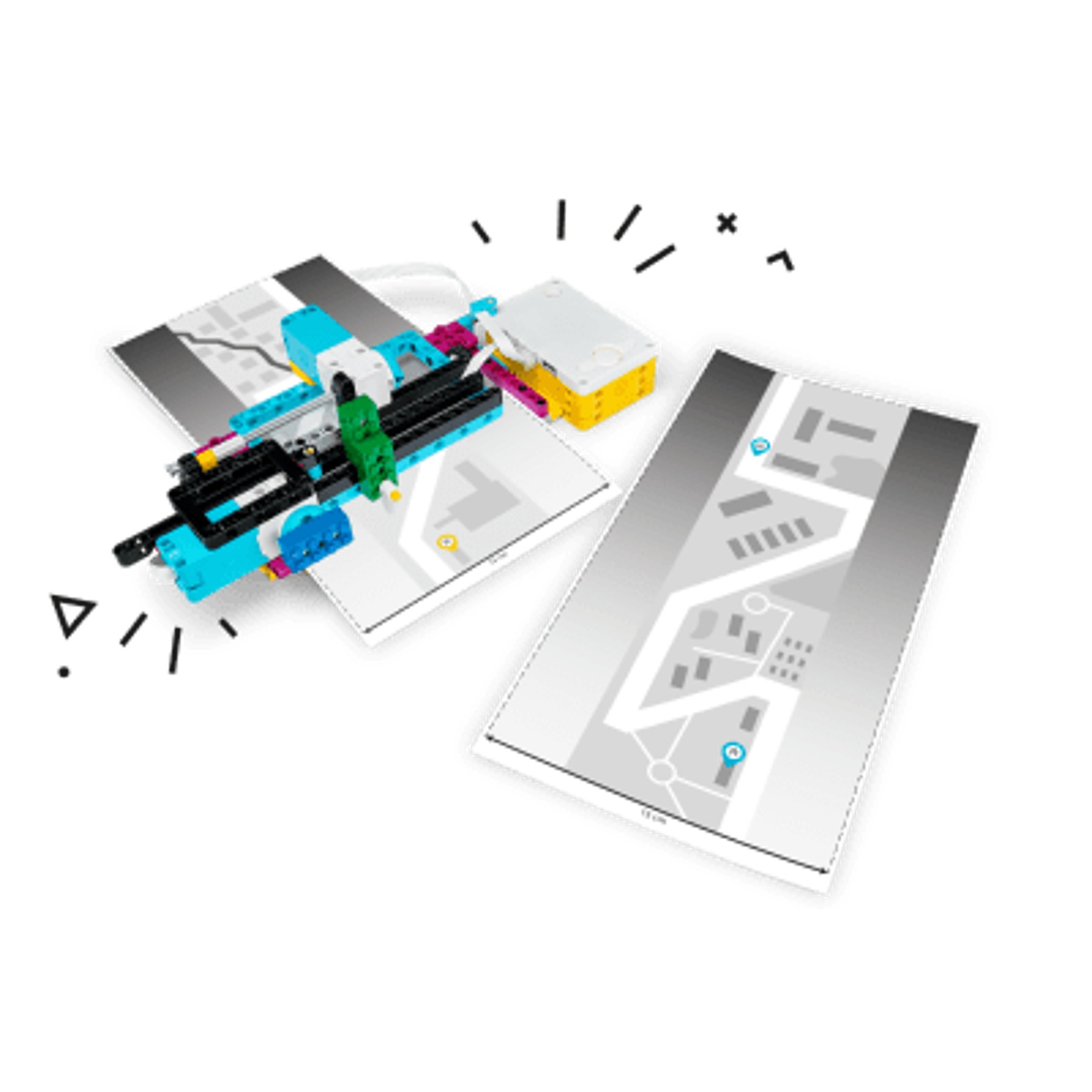
Building Tips
Tandem Build
Split each team's building tasks to ensure that everybody is actively involved:
- Student A: top of the tracker
- Student B: bottom and needle of the tracker
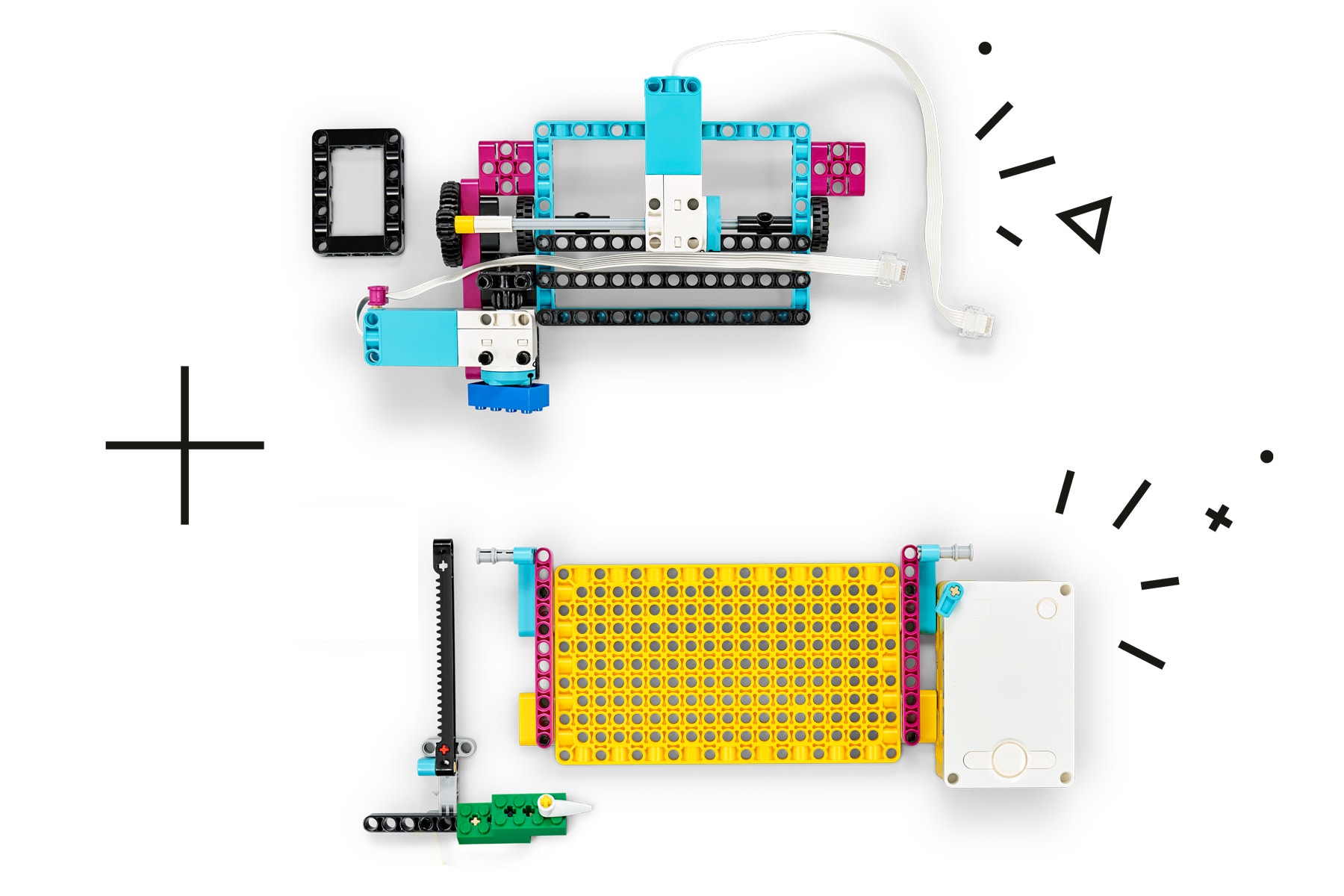
Printed Maps
You can use blank paper for this lesson but pre-designed maps are provided. The "city path" is made up of different shapes, right angles, and diagonal lines.
Your students will need to recognize that there are different patterns, and use or repurpose the programming stacks to get the tracking system to follow the path using the tracker needle.
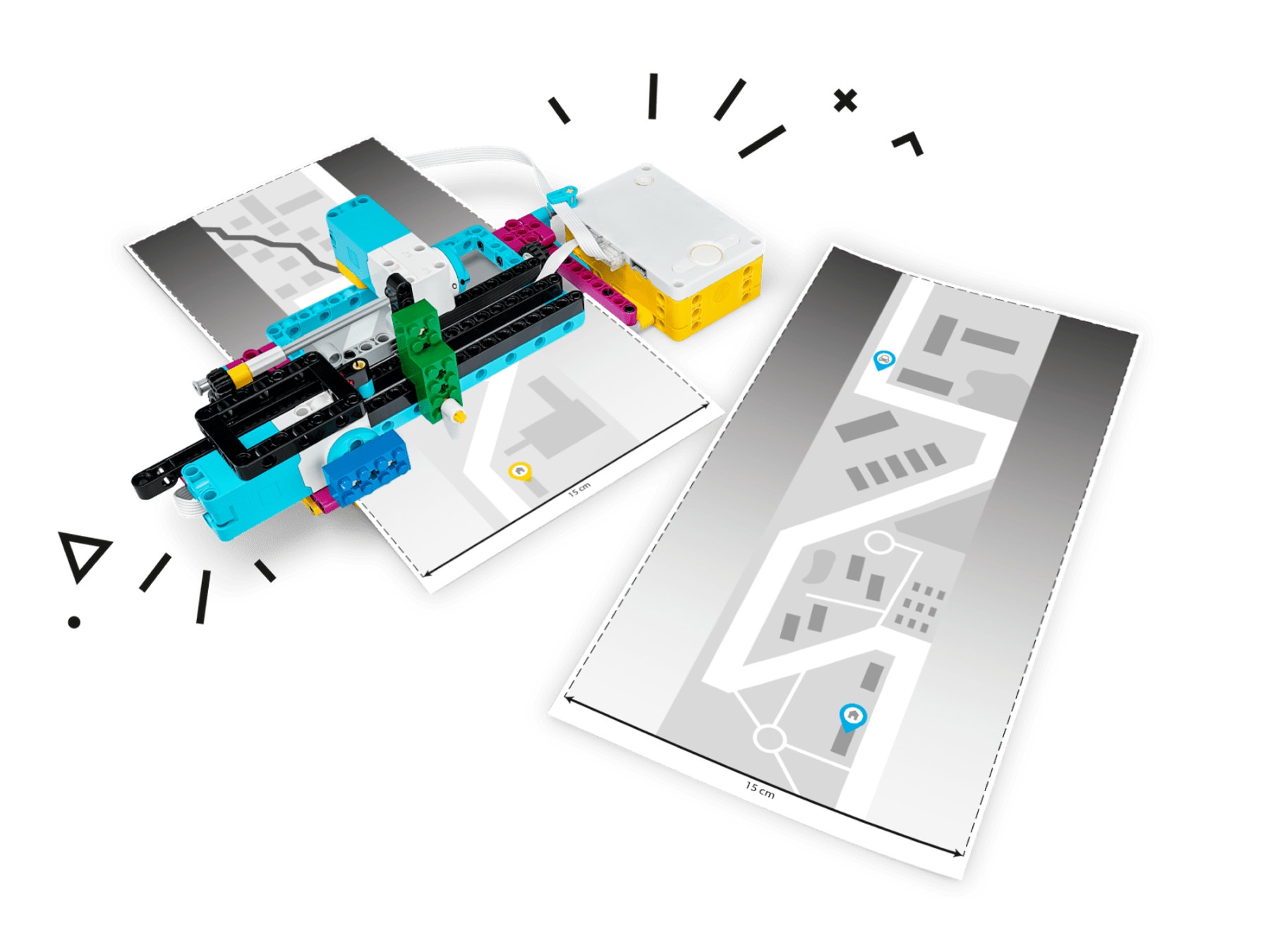
Loading the Paper
Here's how you load the paper:

Transform Your Tracer into a Plotter
Your students can transform their tracking system into a plotter by replacing the tracker needle by a pen holder. Give them some time to have a bit of fun drawing!

Coding Tips
Main Program

Possible Solution

Other Program

Differentiation
Simplify this lesson by:
- Using only vertical and horizontal lines, to begin with (keep diagonal lines for another moment)
Take this lesson to the next level by:
- Creating new programming stacks so students can draw more complex shapes
- Using two class periods to go more in-depth with these concepts
- Integrating the math extension
Assessment Opportunities
Teacher Observation Checklist
Create a scale that matches your needs, for example:
- Partially accomplished
- Fully accomplished
- Overachieved
Use the following success criteria to evaluate your students' progress:
- Students can recognize simple patterns like horizontal, vertical, and diagonal lines.
- Students can repurpose code to suit their needs.
- Students can give proper attribution to the original program they've used.
Self-Assessment
Have each student choose the brick that they feel best represents their performance.
- Blue: I've used some of the programming stacks to navigate the first map.
- Yellow: I've used and adjusted some of the programming stacks to navigate the first and second maps.
- Violet: I've used and adjusted some of the programming stacks to navigate the first and second maps, and have used comments in my program.
Peer-Assessment
Encourage your students to provide feedback to others by:
- Having one student score the performance of another using the colored brick scale above.
- Asking them to present constructive feedback to each other so that they can improve their group's performance during the next lesson.
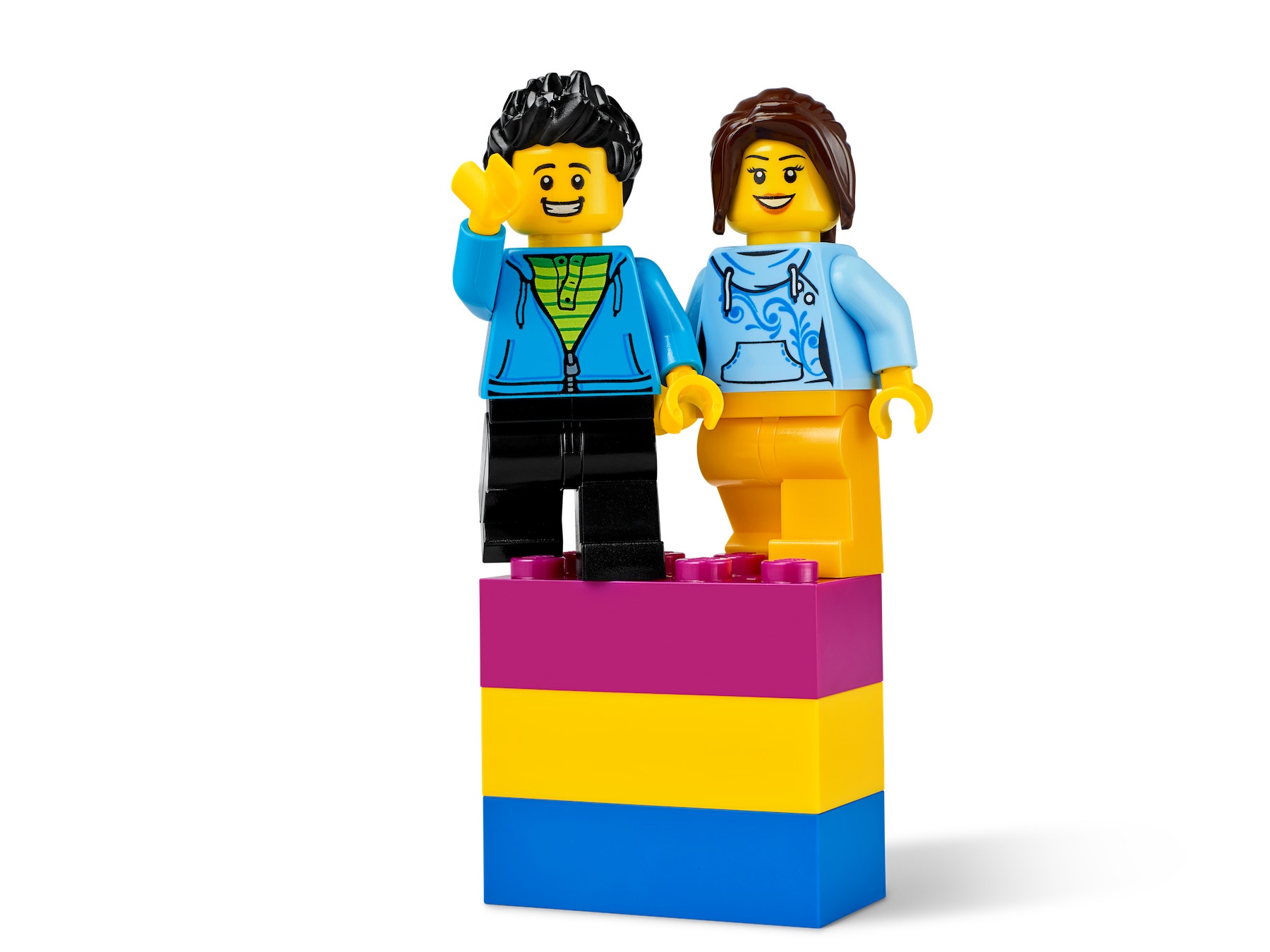
Math Extension
To incorporate math skills development:
- Have your students create a proportional table to find the relation between motor rotation and length of the line traced. Have them transform that relation in the shape of px + q = r.
Note: This will make for a longer lesson.
Career Links
Students who enjoyed this lesson might be interested in exploring these careers pathways:
- Construction And Architecture (Architecture)
- Information Technology (IT Applications)
- Manufacturing And Engineering (Pre-Engineering)
- Transportation (Automotive Technology)
Teacher Support
Students will:
- Develop their ability to recognize patterns and create effective programs
CSTA
2-AP-16
Incorporate existing code, media, and libraries into original programs, and give attribution.
Common Core
CCSS.MATH.CONTENT.7.RP.A.1
Compute unit rates associated with ratios of fractions, including ratios of lengths, areas and other quantities measured in like or different units.